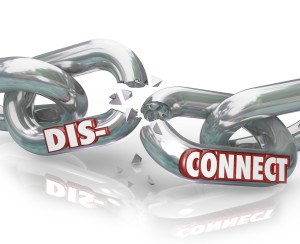When I began evangelizing social selling as early as 2006, the majority of sales executives just didn’t see how using tools like LinkedIn would make a real difference in terms of reaching buyers and generating leads. But as buyer behavior and expectations began to change, now not a day passes that you don’t hear about why you need to be social selling. If you are still fence sitting, either your target customer isn’t using social networking platforms like LinkedIn or Twitter actively, or you haven’t fully grasped how to incorporate social selling strategies into your sales process in a way that drives sales results.
Many salespeople come to me frustrated that their online efforts don’t seem to be panning out, and that can certainly be happening for several reasons, which I’ve highlighted below.
Unrealistic expectations. One glaring reason why sellers struggle is because they mistakenly believe that using social channels helps to short-cut the sales process. That’s not true at all. Like every other aspect of selling, work is involved. It takes time to develop a relationship and earn someone’s trust. That’s true online and off. And if you have no plan, are not following a specific social engagement routine and measuring the results, it will be hard to justify the effort you are putting in. When done right, the rewards make the investment in time worth it!
 Sales messaging. Being on the receiving end of sales pitches myself, I can tell you that most sales messaging is just plain awful. Email and phone messages are rarely constructed from the buyer’s point of view. In other words, buyers have business problems they trying to solve, so your feature focused product pitch falls on deaf ears.
Sales messaging. Being on the receiving end of sales pitches myself, I can tell you that most sales messaging is just plain awful. Email and phone messages are rarely constructed from the buyer’s point of view. In other words, buyers have business problems they trying to solve, so your feature focused product pitch falls on deaf ears.
As the old saying goes, you never get a second chance to make a good first impression. You have one shot at that first moment of engagement. Make it count. Do your homework. It isn’t the number of emails you send or phone calls you make that lead to that net sales return you want; it is the quality of the message and approach that matters.
Quality versus Quantity. Feeling the pressure to hit revenue goals, sales managers insist that sellers do more when leads are light in the sales opportunity pipeline. Make more cold calls. Send more emails. Connect with more people. Just – do – more. More of the wrong activity, however, isn’t going to lead to the right result. If all you focus on is the activity – more feature dumps, more demo’s, more calls, more emails… nothing will change if the activity provides zero value for the buyer. Buyers are looking for business people who can help them solve business problems. If you can’t do that, it will never matter how much hustle you put into it. When you understand the buyer’s pain points, their decision-making process, and can articulate the type of quantifiable value you bring to them, that’s when they will give you a shot.
Go Where Your Buyers Are. This suggestion falls into the category of stating the obvious. Go where your buyer is likely to be. Choosing the proper social media platform is paramount. Otherwise, you’ll waste time spinning your wheels and become frustrated. Your goal is to build an integrity-based relationship that over time may lead to a sale. But first things first. You must fish where the fish are, and as I said earlier, it is possible that your target buyer isn’t as active online. That means you’ll need to explore other ways to try and capture their attention. My strategy includes a mashup of things like speaking at events or on webinars, in-person networking, podcast interviews, facilitating buyer peer-peer networking lunches, writing articles, making the outbound phone calls and more.
Content Not Relevant. Content is a big part of social selling. The worst thing you can do is to push content out there randomly that isn’t consistent with what your target buyer will find valuable. That means you need to understand what they care about or the challenges they likely face. Therefore, creating your plan is important. It will help you determine whom you sell too and what is important to them. Things like trends in their industry, competitive pressures, their company’s strategic priorities, the financial health of the organization and more. It isn’t difficult to find that information and armed with that knowledge you can share the right kind of content to demonstrate that you get what your target buyer cares about.
Lack of Follow Up. Here are two statistics that may surprise you: 1) Per industry estimates, between 40 to 50 percent of all inbound sales leads are never followed up. Wait. What? Close to half of inbound leads are left to die on the vine? 2) The average salesperson only follows up two times on every lead. How can you expect to be successful in sales if you don’t put more effort than that into your follow up? Calling or emailing a prospect “just to check in” or asking for “an update” on prior interactions is not effective follow up. Your mission as a salesperson is to provide value at every stage of the buying cycle.
 Summing it Up. Salespeople need to continually evolve and adapt their approach to serve the voice of the customer. The most successful and forward-thinking sales representatives will use social media as part of their sales process to connect with buyers, develop relationships, demonstrate their credibility and increase their odds of getting buyers to take notice.
Summing it Up. Salespeople need to continually evolve and adapt their approach to serve the voice of the customer. The most successful and forward-thinking sales representatives will use social media as part of their sales process to connect with buyers, develop relationships, demonstrate their credibility and increase their odds of getting buyers to take notice.
However, social selling isn’t a cure-all for your sales challenges. It is a set of tactics that combined with other sales strategies can help to improve the quality of your lead generation efforts and the size and quality of your opportunity pipeline. These tactics aren’t the only thing you’ll do to be successful in reaching your quota goals though, but engaging online is simply part of today’s selling playbook!
Like this post? Please share with your networks. And if you missed my Selling in the Age of the Customer webinar, you can watch it on demand HERE.
Leave a Reply